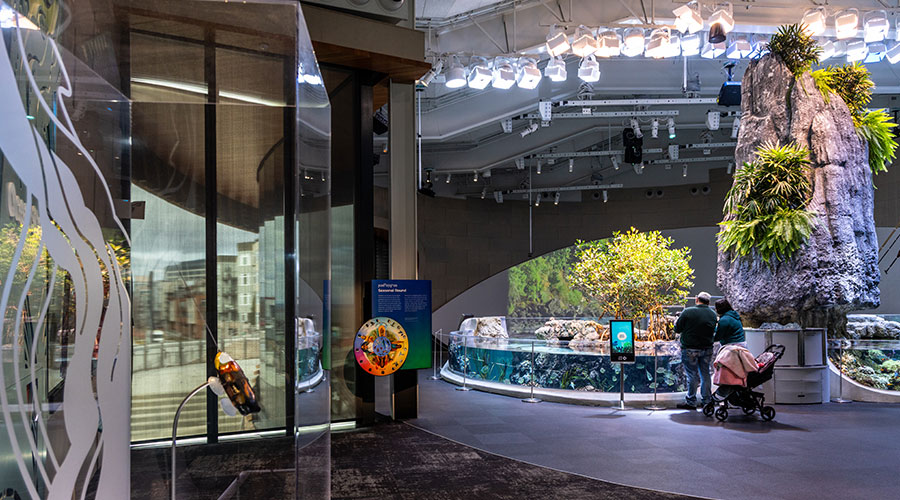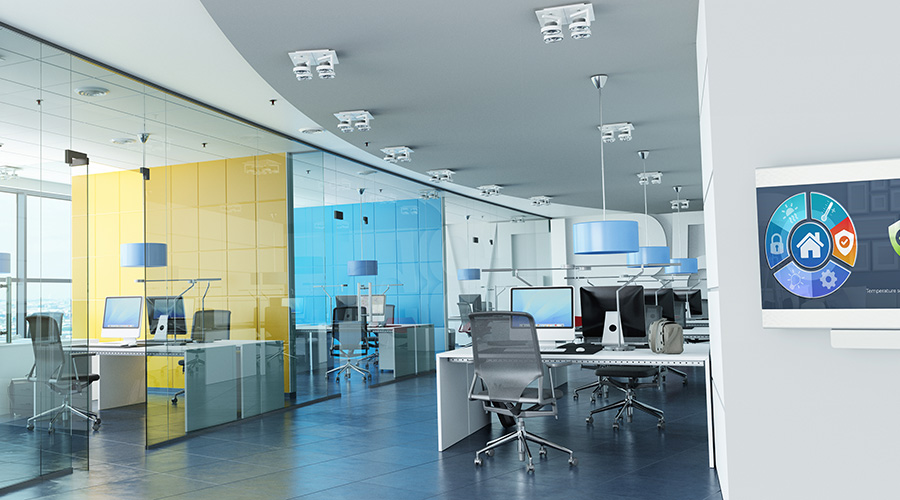How LEDs, TLEDs, and New Regulations Can Aid Lighting Control Upgrade Strategies
Second of a two-part article explaining best practices for lighting controls upgrades, and their many benefits.
The efficiency and economy of TLEDs and LED kits have made them potent competitors to existing fluorescent lamps. Wattage reductions of 50 percent (or more) are possible while maintaining task light levels. But that reduces the amount of electricity that controls can save. John Fetters of Effective Lighting Solutions notes that “it is difficult to make a cost-effective case for dimming and daylight harvesting controls once the lighting power density (LPD) is down in the .5 to .7 watts per square foot range.”
But simple payback based solely on energy cost savings may be only part of the benefit calculus. Speaking for the Lighting Controls Association, Education Director Craig DiLouie points out that energy isn’t the whole story with lighting controls. “These [new] capabilities are valuable in a broad range of applications … allowing operators to use lighting more effectively to create a user experience” that may transcend energy savings.
The economics of controls are also being challenged by recent shifts in electric rate structures. In much of the United States, the cost for the energy part of the bill (i.e., kilowatt-hours, or kWh) has dropped while the cost of peak demand (i.e., kilowatts, or kW) has risen. In some areas, peak demand charges account for 30 percent to 70 percent of a monthly bill. Controls are great at reducing energy use (i.e., kWh) but may not be as good at cutting peak demand. Unless lighting is shut off or dimmed at the same time the whole building peaks each month, that part of the bill may be unaffected.
As “smart” (i.e., digital) electric meters are installed that measure use in 15-minute (not monthly) increments, more time-of-use rates are appearing. Charging more during the day and much less at night, they may reduce dollar savings from occupancy sensors that mainly cut use during after-hours, while helping make the case for daylighting, which does the opposite.
While once a reasonable estimate of savings from controls could be determined by multiplying average kWh price by the projected kWh to be saved each year, that method may no longer yield a realistic result. That average price (from dividing total electric bill by its total kWh) assumes peak kW drops proportionately with a cut in kWh. That’s fine when cutting lamp wattage that would otherwise be on during peak load, but may not yield useful numbers for a device that shuts lamps off at night, or dims them at various times of day. Instead, use only the value of the energy part of the rate (i.e., kWh price without demand or fixed charges). Using the wrong method can lead to disappointment when kWh consumption drops a lot, but the overall electric bill does not.
Work the regs
While states have adopted different versions of the ASHRAE energy code, many now require lighting controls to be used in new construction or when more than 10 percent of lighting is renovated or both. The same codes mandate lower LPDs, leaving some designers wondering why controls are also required to control such low wattage. Stan Walerczyk of Lighting Wizards states that “any mandating of controls when not cost effective and any extra energy code costs can kill lighting retrofit projects because financial returns will not be good enough.” But there may be ways to economize and still follow the regs.
In some cases, a facility may get by with simple switch timers or occupancy sensors. Where bi-level lighting and other sophisticated measures are mandated, occupancy sensors are available that may be wired to provide it at a reasonable cost. Some come with lighting sensors that limbo under daylighting requirements by keeping lights off when incoming natural light is sufficient. DiLouie points out that some codes “encourage adoption of more advanced controls by providing LPD credits” that offer designers greater flexibility in choosing the type and intensity of lighting.
Some lighting practitioners now specify lower ambient LPDs and light levels from built-in fixtures and then supplement them with task lighting whose wattage is not counted by energy codes. Fixtures are now available with built-in motion sensors, dimmers, or both, thus avoiding the need for separate controls and wiring. And, depending on the cost of some retrofit options, a few may bypass regulatory thresholds: retrofitting existing fixtures to use LEDs may get by, while installing new LED fixtures may not.
With all these factors to consider, engaging an experienced lighting practitioner may pay for itself in reduced construction costs while still complying with energy codes.
Lindsay Audin, CEM, LEED AP, CEP, is president of EnergyWiz, an energy consulting firm based in Croton, N.Y. He is a contributing editor for Building Operating Management.
Email comments and questions to edward.sullivan@tradepress.com.
Related Topics:













